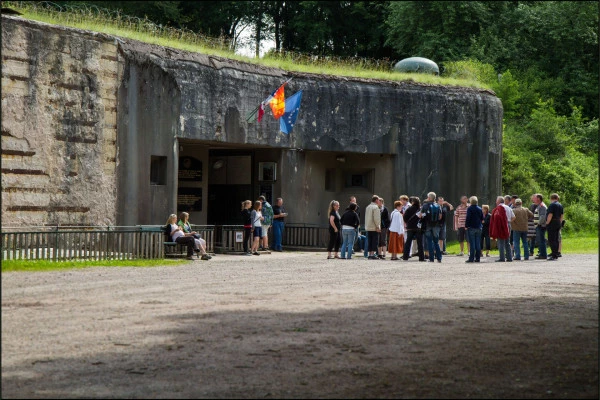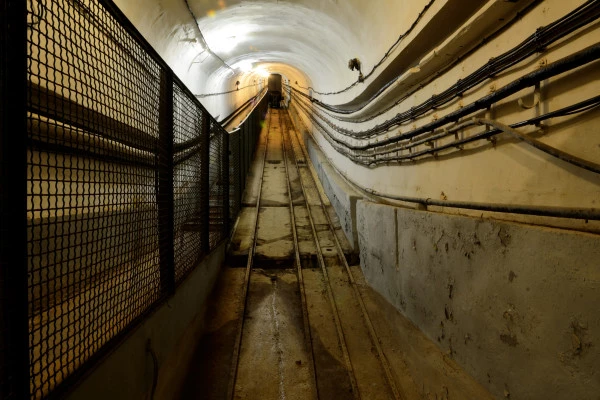Guided tour in the Maginot Line fortress "Four-à-Chaux"





The Four-à-Chaux de Lembach is a major site of the Maginot Line in Alsace. Its guided tour will allow you to discover the period equipment of this imposing fortress with 5km of underground galleries and to understand its role during the Second World War.
-
A very complete guided tour that allows everyone to fully understand how the Maginot Line functioned during the Second World War.
-
The Four-à-Chaux is a mountain fortress and is therefore equipped with an impressive sloping plane (unique in Alsace) which connects the lower and upper galleries.
-
A visit to the Four-à-Chaux structure is ideal all year round: you will be sheltered in rainy weather (the entire visit takes place underground), warm in winter and cool in hot weather (the structure has a constant temperature of 13° C or 55°F).
On the programme
The guided tour of the fortress is led by the volunteer guides of the "Association des amis de la Ligne Maginot de Lembach", who will guide you through the museum for about 1h30, taking you on a journey of about 1.5 km (1 mile) through the underground galleries and showing you the equipment and installations of the Four-à-Chaux.
Built between 1930 and 1935, the Four-à-Chaux fortress is one of the major sites of the Maginot Line in Alsace. Its location on a limestone hill south of the village of Lembach makes it a special place built on two levels of galleries. Visitors enter the upper gallery of the structure at ground level through the men's entrance, then gradually go down under the hill to end up 30m (98 feet) underground in the heart of the building, then reach the lower gallery using the sloping plane, unique in Alsace, by means of a staircase with 215 steps, before exiting through the ammunition entrance. Most of the original installations are still in place. The visitor will go from the barracks where the 580 men who occupied the structure during the mobilisation lived and where he can discover the kitchen, dormitories, hospital... to the officers' quarters and the central command post, then he will have the opportunity to visit one of the combat blocks where the guide will demonstrate the functioning of the artillery turret, before discovering the engine room, the multi-purpose room and an important museum...
This very complete visit allows everyone to imagine life in a Maginot Line fortress and to understand how this important line of defence functioned during the Second World War. (duration of the visit: 1h30 - temperature: 13°C / 55°F)
Good to know
| Included in the offer | Guided tour of about 1h30, on foot over a distance of about 1,5km (1 mile). |
| To take with you | A warm clothing (constant temperature of 13°C / 55°F) Important: You must present all tickets at the desk! Print out your tickets or download them before your visit, there is no network near the fortress. |
| Other info | Guided tour only available in French or German. Possibility to follow these visits with a GB translation. Visit in English is possible on demand for a group of more than 20 people, please contact us on +33 (0)3 88 94 48 62. Please arrive 10 minutes before the start of the visit. Please report at the desk at your arrival. |
| Spoken languages | German, English, French, Italian |
 Maginot Line structure
Maginot Line structure
Tickets sold out.
Please try again in a few days.

Your tickets emailed instantly and free cancellation up to 24 hours before.